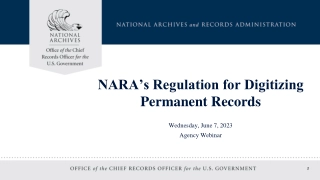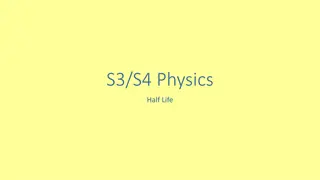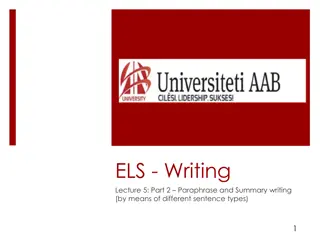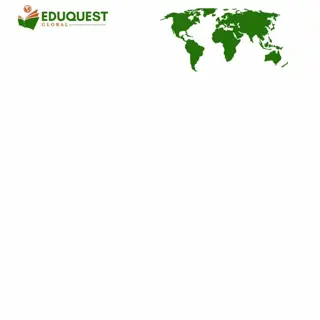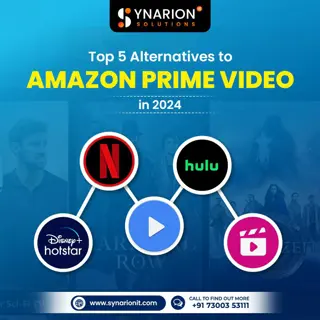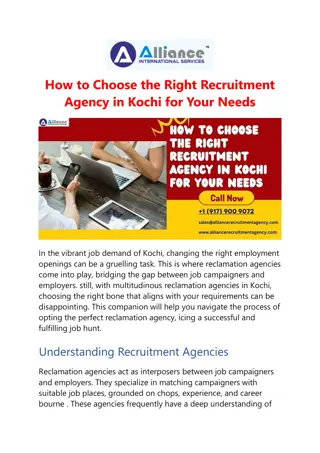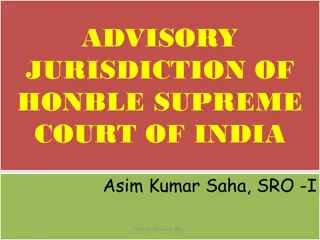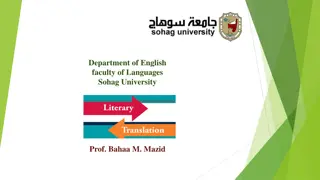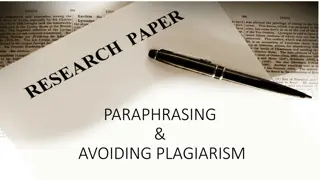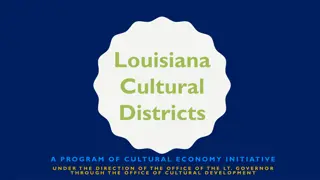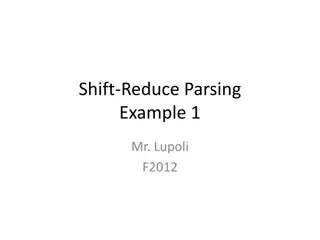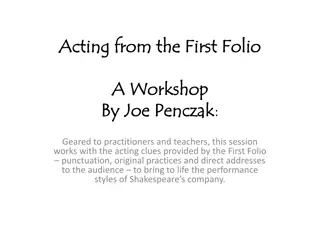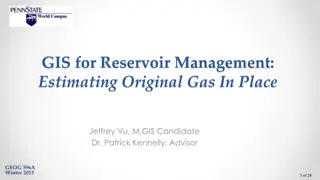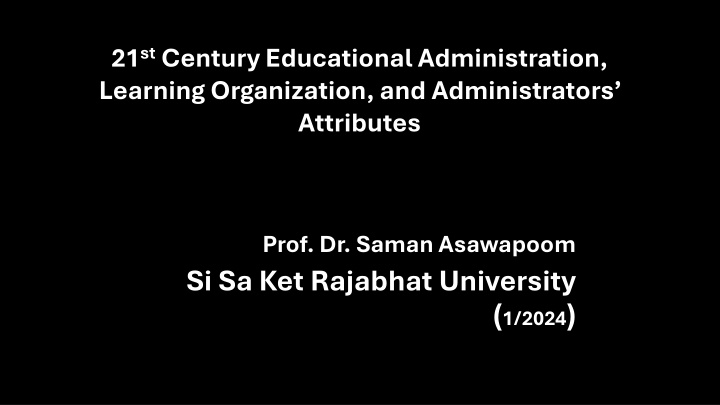
Future Trends in Educational Administration and Learning Organization
Explore the convergence of 21st-century educational administration, learning organization, and administrator attributes, emphasizing the importance of professionalism, ideology, and spirituality. Discover how education in the future must adapt to address challenges such as overpopulation, climate change, and evolving work settings.
Download Presentation

Please find below an Image/Link to download the presentation.
The content on the website is provided AS IS for your information and personal use only. It may not be sold, licensed, or shared on other websites without obtaining consent from the author. If you encounter any issues during the download, it is possible that the publisher has removed the file from their server.
You are allowed to download the files provided on this website for personal or commercial use, subject to the condition that they are used lawfully. All files are the property of their respective owners.
The content on the website is provided AS IS for your information and personal use only. It may not be sold, licensed, or shared on other websites without obtaining consent from the author.
E N D
Presentation Transcript
21st Century Educational Administration, Learning Organization, and Administrators Attributes Prof. Dr. Saman Asawapoom Si Sa Ket Rajabhat University (1/2024)
This last unit includes three main areas: 21st Century Administration, Learning Organization, and Administrators Attributes, including Professionalism, Ideology, and Spirituality How these three concepts come together might be perceived differently, but to me I conclude that Firstly, 21st Century Education and administration is a challenging topic, reminding us that future educational administrators should pay attention to and keep in mind that our job is to facilitate learners to be ready for whatever will be, and learning to learn should be the key mission of education.
Secondly, School as a social institute, holding responsibility to realize its purpose, should be a learning organization while functioning as learning stewardship of learners, both on campus and out campus. An educational institution, as a learning organization, demonstrates how human organization lives to learn and learns to survive in this rapid changing world. Finally, no matter what happens, an administrator whose job is to lead an educational organization to achieve desired goal(s) in human factorized influences among rapid changing context should have and demonstrate high standard professionalism, with determined ideology and spirituality.
Now, lets start with 21st century education and administration. The administrator s job is to run an educational organization efficiently and effectively to facilitate learning of learners. So, before we discuss about how educational administration in 21st century be like, let us start with what 21st century education shall be like.
Talking about the future education, I am not saying that I am a great predictor or a fortune teller, but I (and WE) cannot plan the future if I (WE) do not have clue guesses of what the future will be like. My academic guesses of what the future education should be like is based on a few books I have read (Watson, 2008; Friedman, 2009; Smith, 2011; Trilling & Fadel; and Marr, 2022),and also my own experiences.
Crucial trends are (1) Overpopulation while decreasing resources; and more senior citizens and less newly born generation, (2) Climate changes, living chains changes, (3) Unclear community and social boundary, (4) Work setting and approach changes, (5) More problems, but less concerns, (6) Overflooded with data, information, knowledge, but lack of skills and deep understanding to make good uses, and (7) Complex management of state and organizations.
21st Education according to Trilling & Fadel: Learning to Create together (1) Learning and Innovation Skills: -The Knowledge-and-Skills Rainbow -Learning to Learn and Innovate -Critical Thinking and Problem Solving -Communication and Collaboration -Creativity and Innovation [Knowledge-and Skills Rainbow, Core Subjects and 21st Century Theme: Live and Career Skills; Learning and Innovation Skills; and Information, Media, and Technology Skills]
(2) Digital Literacy Skills: Info-Savvy, Media- Fluent, Tech-Tuned -Information Literacy -Media Literacy -ICT Literacy (3) Career and Life Skills: Work-Ready -Flexibility and Adaptability -Initiative and Self-Direction -Social and Cross-Culture Interaction -Productivity and Accountability -Leadership and Responsibility
21st Education according to Marr (1) Humility, recognize strength and weakness so that we can grow and improve (2) Optimism, ability to surf the wave of transformation within our grasp, and no one is left behind (3) Self-confidence, everyone can learn and improve (4) Resilience, knowing that these skills can help us to navigate changes and challenges (5) Taking the initiative, being ignored in traditional education, should now be focused
From 20 skills: (1) Digital Literacy, (2) Data Literacy, (3) Technical Skills, (4) Digital Threat Awareness, (5) Critical Thinking, (6) Judgement and Complex Decision-Making, (7) Emotional Intelligence and Empathy, (8) Creativity, (9) Collaboration and Working in Team, (10) Interpersonal Communication, (11) Working in GIGs, (12) Adaptability and Flexibility, (13) Cultural Intelligence and Diversity Consciousness, (14) Ethical Awareness, (15) Leadership Skills, (16) Brand of YOU and Networking, (17) Time Management, (18) Curiosity and Continual Learning, (19) Embracing and Celebrating Change, and (20) Looking After Yourself
21st Education according to Saman Asawapoom (2567) (1) Learning to learn Skills (2) Flexible and Adaptable Skills (3) Diversity Interpersonal and Human Skills (4) Digital and Technological Skills (5) Language and Communicational Skills (6) Creative and Innovative Skills (7) Economy Management Skills
According to my definition of education as a process to facilitate learners learning and expected learning outcomes (educational aims). 21st education aims are expected learning outcomes (educational aims) and making sure that educational processes are designed and implemented to facilitate learners learning.
The second issue to talk about today is Learning Organization : The long-time concept that still is applicable. On the other hand, the understanding and implementing the concept vary from one to another. Why? My study comes to conclusion that : 1. People often perceive, understand, and practice on what they think it is true. 2. People must choose one way over another to do thing, so there is no ways the other alternative is better. 3. People experience only things that come to their experience and assume it the best. (For we don t know the other ways around.)
Lets see how we would do about it. 2.1 Understanding Learning Organization During the years of 1983-1986, I had been experimented supervision practice on Clinical Supervision in secondary school in Educational Supervision Region 10. The supervision based on peer supervising concept , which was originally developed by Cogan, and rather by Goldhammer. The concept proposed that the best way of teacher development was learning among teachers themselves.
After a year of experience, I had learned that school would continuously improve if school, as an organization, functions like a living unit . However, at that time the concept of learning organization has not yet been developed. But I perceived a school, as a living unit, with an administrator and teachers were functioning like living cells . My experiment was interested by the Department of Secondary School, Ministry of Education, and institutionalized as Internal School Supervision . I was of the leading team members.
In 1991, as a Fulbright visiting scholar to State University of New York, at Buffalo (UB), I read an article on Learning Organization, by Peter Senge. The concept is very similar to mine of a school as a living unit . I pursued my curiosity by reading more of Senge s works. One of his best book is The Fifth Discipline: The Art and Practice of The Learning Organization . Parts of the concept will be shared in the next frame.
Peter Senge defined Learning Organization as an organization that is continuously expanding its capacity to create its future . Survival learning or adaptive learning is crucial, but adaptive learning must be joined with generative learning where learning enhancing our capacity to create.
Five main elements of Learning Organization proposed by Senge are 1. Systems Thinking: A conceptual framework to make the full pattern clear, and to help us see how to change them effectively. 2. Personal Mastery: The discipline of continually clarifying and deepening our personal vision of focusing our energies. 3. Mental Model: Mental models are deeply ingrained assumptions, generalizations, or even pictures or images that influence how we understand the world and how we take actions.
2. Building Shared Vision: Shared visions are organizational goals, values, and missions that become deeply shared throughout the organization, for examples: IBM, service; Polaroid, instant photography; Apple, computing power for the mass. 3. Team Learning: Team Learning means team members learn together, not learning of an individual member. Unless teams can learn, the organization cannot learn. The team can learn by starting with dialogue, thinking together, and discussion. Patterns underline team interaction are keys to promote or the other ways around: such as defensive vs creative pattern
Learning Organization according to Garvin: Garvin defined Learning Organization as an organization that processes creative skills, seeks knowledge, interprets, transfer, installs, and applies what have learned objectively and adapts to environments.
Garvin Organizational Characteristics & Process: Learning Organization should (1) Have learning schedules and guidelines, (2) Open access to new information, (3) Avoid doing the same mistake over again, (4) Do not lose best practice or knowledge from losing an employee, and (5) Take actions or solve problems using knowledge they have or have learned And the process includes (1) Seeking information, (2) Interpret information, and (3) Apply the information
2.2 Building a learning organization Building a learning organization is a gradual process of organizational capability and culture towards excellence. If you agree with Senge s disciplines (principles) of Learning Organization , then in order to build a learning organization, you must enable organization (Two or more of people working collaboratorily to achieve goals) to characterize those five disciplines, according to organizational contexts and needs.
If you agree with Garvin, you should create 5 characters of Learning Organization, and implement 3 procedures of conducting Learning Organization. But if you agree with Marquardt or others, study their concepts and apply.
My concept of Learning Organization: Since I define organization as an assembling of two or more people working to achieve common goal(s), so Learning Organization refers to the act of organizational members on learning together towards realizing the organization s purpose and how to achieve their purpose. If any problem occurs, they should detect it and seek how to solve that problem in team to realize their purpose. Personal learning is good, but as a learning organization, team learning is crucial.
To build a Learning Organization, you should start with (1) Enable your workplace to become organization , (2) Establish an organizational learning systems and culture, (3) Clarify and share an organizational purpose, values, mission, and benefit, (4) Utilize participative approach in operating the organization, and be accountable for the result, and (5) Build a learning resource asset and activate effective usages
The last issue, we shall exchange our understanding and experiences on administrators attributes 3.1 Administrators attributes : professionalism Education organization and administration is no trail & error mission . It is a must to do the job right from the beginning to the end. No second chance-room for this job. So, an educational administrator must or should be a professional. By professionalism, it refers to the career of client protected , meaning anyone in this position must guarantee quality work , making sure that every single student must receive the best education one should have.
Professional is a divided line between those who do their jobs based on the following principles: 1. High achievement and accountability, doing their jobs more than responsibility (enough to get paid), but with high standard 2. Full commitment, doing their jobs at the top of potential capacity and excellent result 3. Open mind and learn, accepting defects, opening for critics, and continuous learning
4. Prioritization, choosing the most needed alternative, work over personal interests, and organizational benefit over his/her own 5. Principle over emotion, basing decisions and actions on grounded principles (theories) and information, and not bias and emotion
3.2 Administrators attributes : ideology Ideology represents a standpoint of a person or a group of people , based on beliefs, values, and deeds. Ideology might appear in many areas and facets, personal, public, political, educational, living, and so on. Educational administrator should have clear ideology of personal life, education, and society in general.
Educational figures should be good models of living, working, and learning. They should have passion of inquiry and facilitating of others learning, self-understanding, and well- being. I do not know why there are human-beings on earth among many other living things and non-living things. I do not know what goes after death. I do not know about rebirth or transmigration of souls. But now, I am a human-being. So, I shall do my best to function and live. Also, facilitate others to understand themselves and decide what to do by themselves One may think and want to stay idly. If so, what is the difference between human-beings and worms or stones?
3.3 Administrators attributes : spirituality Spirituality often refers to something or behavior related to soul like a definition in Wikipedia, saying that spirituality may involve belief in a supernatural realm beyond the ordinarily observable world, such as personal growth, religious experiences, a quest for an ultimate or sacred meaning, and or purpose of in life. However, in work context, spirituality should refer to the act of working with heart, soul, and meaning with mindful consideration. In short, working by a human being, with human beings, and for human beings and related.
Three criteria are crucial to measure spirituality: Mindfulness, Consequence Impact, and Accountability. Mindfulness means paying full attention on what you about to do, while doing it, and being ready for the consequences. Consequence Impact means what was, is, and will be the cause impacts to others, you, and environment. A professional should be aware and consider the impacts of their deeds. Accountability means being responsible to do your job well and accountable for your deeds.
Spirituality is a divided line between human beings and none-living things, including AI, and between human beings and other living creators, and between professionals and non-professionals. THANK YOU
Reference resources Garvin, D. (2000). Learning in Action: A Guide in Putting Learning Organization to Work. Trilling ,B.& Fadel., C. (200). 21st Century Skills: Learning for Life in our Time. Smith, G. (2009). The Next 100 Years: A Forecast for the 21st Century. Marquardt, M.J. (2011). Building the Learning Organization: Achieving Strategic Advantage trough a Commitment to Learning. McCloskey, M.W. (2014). Learning Leadership in A Changing World: Virtue and Effective Leadership in the 21stCentury. : Four Forces Shaping Civilization s Northern Future. Smith, L.C. (2011). The World in 1050 Saman Asawapoom. (2021). Organizing and Management of Thai Education: Survival How to. Senge, P.M. (1990). ///The Fifth Discipline: The Art & Practice of The Leaning Organization. Watson, R. (2008). Future Files: The 5 Trends that Will Shape the New 50 Years. Wikipedia. (2024). en.m.wikipekia.org, spirituality.



